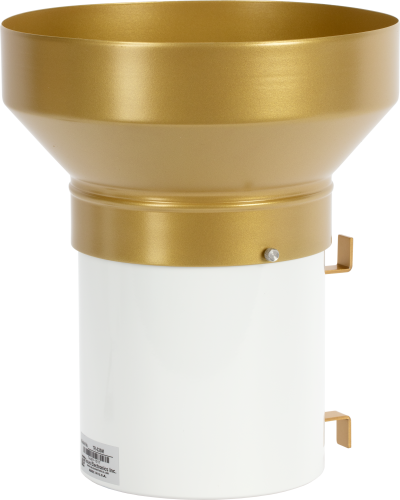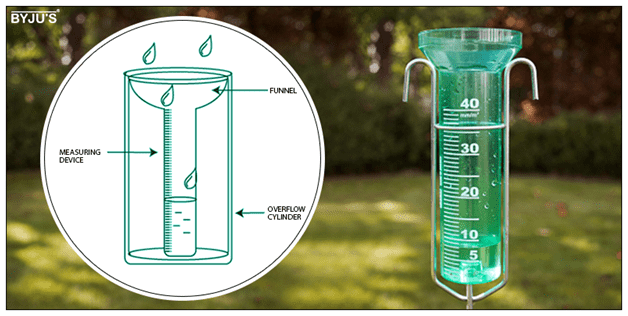Expert Tips for Utilizing a Rain Gauge to Monitor Local Weather Conditions
Revealing the Scientific Research Behind Rain Determines: How These Tools Play an Essential Function in Environment Research Study and Ecological Monitoring
Rain evaluates, seemingly easy gadgets, hold a profound importance in the world of environment research and environmental monitoring. These humble instruments quietly gather among nature's most important elements-- rains. Yet, behind their plain exterior exists a complex science that is vital for understanding the dynamics of our environment. As we peel back the layers of this scientific veil surrounding rain evaluates, we reveal a world where accuracy, information accuracy, and careful observation merge to introduce a deeper understanding of our transforming climate and its influence on the planet.
Value of Rain Gauges
Rainfall assesses play an important role in monitoring and gauging rainfall degrees, offering important information for environment research and analysis. These devices are basic in measuring the amount of rains that occurs in a details location over a certain duration. By gathering and gauging rain, rainfall evaluates deal important insights right into the distribution and strength of precipitation, assisting meteorologists, hydrologists, and climatologists in recognizing weather condition patterns and fads.
In addition, long-term data gathered from rain assesses helps in evaluating climate modification effects and patterns, contributing substantially to clinical study and decision-making procedures. In significance, rainfall evaluates offer as crucial devices in the area of weather forecasting and ecological scientific research, playing an essential duty in progressing our understanding of climate and environment dynamics.
Kinds Of Rain Gauges

Functionality and Procedure
In the world of environment study and atmospheric studies, the effectiveness of rain evaluates lies in their intricate capability and specific functional systems. Rain determines are made to accurately gauge the quantity of precipitation that tips over a details location throughout a collection duration. These tools typically are composed of a channel that accumulates rain and networks it right into a gauging tube. The gauging tube is noted with adjusted dimensions that allow for the specific quantification of rains.
The capability of rain assesses is based on the concept of collecting and determining rainwater in a standardized way. This collected information is essential for recognizing local weather condition patterns, tracking long-term environment fads, and evaluating ecological impacts. To guarantee exact measurements, rain determines need to be tactically put in open areas far from blockages such as buildings or trees that could conflict with the collection process.
The functional element of rain evaluates includes normal upkeep to avoid debris buildup, calibration checks to keep dimension precision, and information tape-recording for analysis (rain gauge). On the whole, the functionality and operation of rain assesses are crucial for collecting dependable precipitation information vital to climate research study and ecological monitoring
Duty in Environment Study
Offered the critical significance of accurate precipitation dimensions in comprehending weather condition patterns and environmental effects, the role of rain assesses in climate research study is vital. Rain evaluates offer vital data for climate study by quantifying the amount of rainfall that drops over a certain area during a given period. This information is vital for monitoring lasting patterns in precipitation patterns, examining the effect of climate adjustment on rainfall distribution, and improving climate versions.

Climate scientists utilize information accumulated from rain determines to evaluate variants in precipitation degrees, determine local climate fads, and assess the performance of water resource monitoring approaches. By comparing historical rainfall information with present dimensions, scientists can find shifts in precipitation patterns, such as adjustments in the frequency or strength of rains events. This info is vital for recognizing how environment change is influencing rainfall characteristics and can help Web Site policymakers make educated choices concerning adjustment and mitigation techniques.
Applications in Ecological Tracking

In flood forecasting, rainfall scale data assists to track rainfall intensity and circulation, permitting authorities to provide timely warnings and take necessary actions to minimize flood risks (rain gauge). Dry spell tracking relies upon rain gauge information to evaluate moisture degrees in the soil and track precipitation deficits, helping in the identification of drought-prone locations and the application of drought feedback approaches
Moreover, rainfall gauge information plays a vital role in water resource monitoring by providing info on water schedule and use patterns. In addition, in agriculture, rain scale information aids farmers in optimizing watering timetables, crop selection, and general ranch monitoring methods based on neighborhood try this web-site precipitation patterns.
Conclusion
Finally, rainfall determines are vital tools for determining rainfall, giving beneficial information for environment study and environmental tracking. With numerous types and capabilities, rain assesses play a critical duty in recognizing rainfall patterns and their effect on the setting. By properly gauging rainfall, these devices contribute to the development of scientific knowledge and help in making educated choices pertaining to water resource monitoring and calamity preparedness.
Rainfall gauges play an indispensable duty in surveillance and determining precipitation degrees, offering important information for environment research and evaluation. The common rainfall gauge, known as the "tipping pail" gauge, is one of the most commonly made use of devices. Ultrasonic rain gauges usage sound waves to detect the visibility of rain, giving real-time information on rainfall levels.Environment researchers use information accumulated from rain determines to evaluate variants in precipitation degrees, determine local climate trends, and review the performance of water resource management methods.In conclusion, rainfall gauges are important devices for measuring precipitation, supplying click this valuable information for environment research and environmental surveillance.